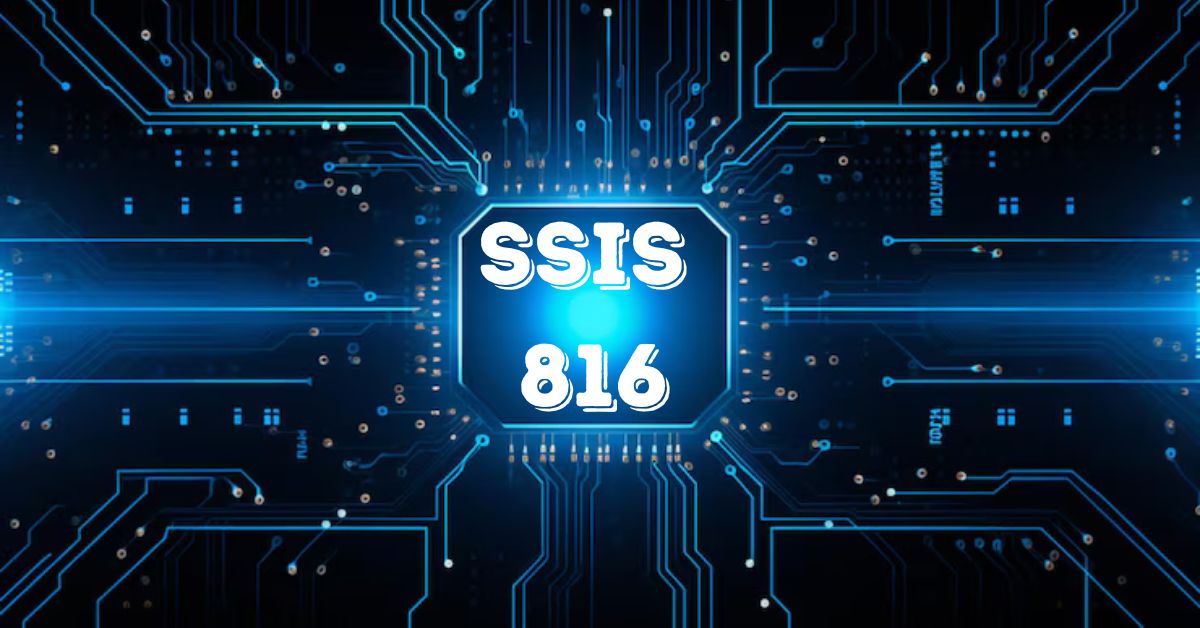In the rapidly evolving landscape of smart technologies, SSIS 816 stands out as a pioneering solution in sensor integration and smart system management. Developed by a consortium of leading tech innovators, SSIS 816 represents a leap forward in the seamless integration of sensors across various applications, from industrial automation to smart cities and beyond.
What is SSIS 816?
SSIS 816, short for Smart Sensor Integration System 816, is a next-generation platform designed to unify sensor data acquisition, processing, and management. It addresses the complex challenges associated with sensor networks by offering a robust, scalable, and highly efficient solution.
Key Features and Capabilities
- Unified Sensor Management: SSIS 816 supports a wide array of sensors, consolidating diverse data streams into a cohesive platform. This capability enhances interoperability and simplifies the management of sensor networks.
- Real-time Data Processing: With advanced data processing capabilities, SSIS 816 enables real-time analytics and decision-making. It processes large volumes of sensor data swiftly and accurately, empowering users to derive actionable insights promptly.
- Scalability and Flexibility: Whether deployed in industrial environments, smart infrastructure, or IoT applications, SSIS 816 scales effortlessly. Its modular architecture supports customization to meet specific operational needs and future expansions.
- Security and Reliability: Security is paramount in SSIS 816. It incorporates robust encryption protocols and authentication mechanisms to safeguard sensitive data, ensuring compliance with stringent industry standards.
- Intuitive User Interface: The platform boasts an intuitive interface that facilitates user interaction and system monitoring. Operators can visualize sensor data, configure settings, and oversee operations seamlessly.
Applications Across Industries
- Manufacturing and Automation: SSIS 816 enhances efficiency in manufacturing processes by optimizing equipment performance and predictive maintenance.
- Smart Cities: In urban environments, SSIS 816 supports smart city initiatives through enhanced traffic management, environmental monitoring, and public safety enhancements.
- Healthcare: Within healthcare, SSIS 816 enables remote patient monitoring, asset tracking, and environmental monitoring in medical facilities.
Future Outlook
As technology continues to advance, SSIS 816 is poised to play a pivotal role in shaping the future of sensor integration and smart systems. Its adaptability and innovation promise to drive efficiencies, improve decision-making processes, and foster sustainable development across various sectors globally.
Conclusion
SSIS 816 represents a groundbreaking advancement in sensor integration technology, offering unparalleled capabilities in data management, real-time processing, and system reliability. As industries embrace the era of smart technologies, SSIS 816 stands as a testament to innovation, paving the way for a smarter, more connected world.
This article highlights SSIS 816’s transformative impact and its potential to redefine how organizations harness sensor data for operational excellence and strategic growth.
FAQs on SSIS 816
Q: What does SSIS 816 stand for? A: SSIS 816 stands for Smart Sensor Integration System 816, a state-of-the-art platform designed for integrating and managing sensor data across various applications.
Q: What industries can benefit from SSIS 816? A: SSIS 816 is applicable across a wide range of industries including manufacturing, smart cities, healthcare, agriculture, transportation, and more. It enhances efficiency, data accuracy, and operational insights in diverse environments.
Q: What are the key features of SSIS 816? A: Key features include unified sensor management, real-time data processing, scalability, security measures, intuitive user interface, and compatibility with diverse sensor types.
Q: How does SSIS 816 ensure data security? A: SSIS 816 employs robust encryption protocols and authentication mechanisms to secure sensor data. It adheres to industry standards to protect sensitive information from unauthorized access or breaches.
Q: Can SSIS 816 integrate with existing sensor networks? A: Yes, SSIS 816 is designed to integrate seamlessly with existing sensor networks, offering compatibility and interoperability across different sensor types and protocols.
Q: What are the benefits of using SSIS 816 in smart city applications? A: In smart cities, SSIS 816 facilitates enhanced traffic management, environmental monitoring, public safety improvements, and efficient resource utilization through real-time data insights and automation.
Q: How scalable is SSIS 816? A: SSIS 816 features a modular architecture that supports scalability from small-scale deployments to large-scale implementations. It can be customized to meet specific operational requirements and future expansion needs.
Q: What support and maintenance options are available for SSIS 816 users? A: Users of SSIS 816 can access comprehensive support services including technical assistance, updates, and maintenance to ensure optimal performance and reliability of the system.
Q: How user-friendly is the interface of SSIS 816? A: SSIS 816 offers an intuitive user interface that simplifies system monitoring, data visualization, and configuration management. It enables users to interact with sensor data efficiently and effectively.
Q: What is the future outlook for SSIS 816 in the tech industry? A: SSIS 816 is poised to drive innovation and efficiency in sensor integration technology. Its capabilities in data management and real-time analytics are expected to shape future advancements in smart systems and IoT applications.
These FAQs provide a comprehensive overview of SSIS 816, addressing common questions about its features, applications, security measures, scalability, and future prospects in the technology landscape.
